
Do you often find yourself struggling to organize your thoughts and ideas? Have you ever heard of a mind map? A mind map can help you visualize your thoughts and create more effective plans for achieving your goals.
Mind mapping has been used for centuries as a technique for brainstorming, planning, and problem-solving. It is a flexible and creative method that can be applied to a wide range of tasks, from organizing a project to studying for a test.
If you are new to mind mapping, don't worry. This beginner's guide will take you through everything you need to know to create your very own mind map. By the end of this article, you'll have a powerful new tool in your arsenal for achieving your goals and staying organized. So let's get started!
In this article
What is a Mind Map
Lists, bullet points, and outlines are commonly used for organizing thoughts and ideas. But mind maps are even more effective.
A mind map is a diagram that starts with a central idea and expands into related topics and subtopics. It helps understand complex information, generating new ideas, and communicating thoughts.
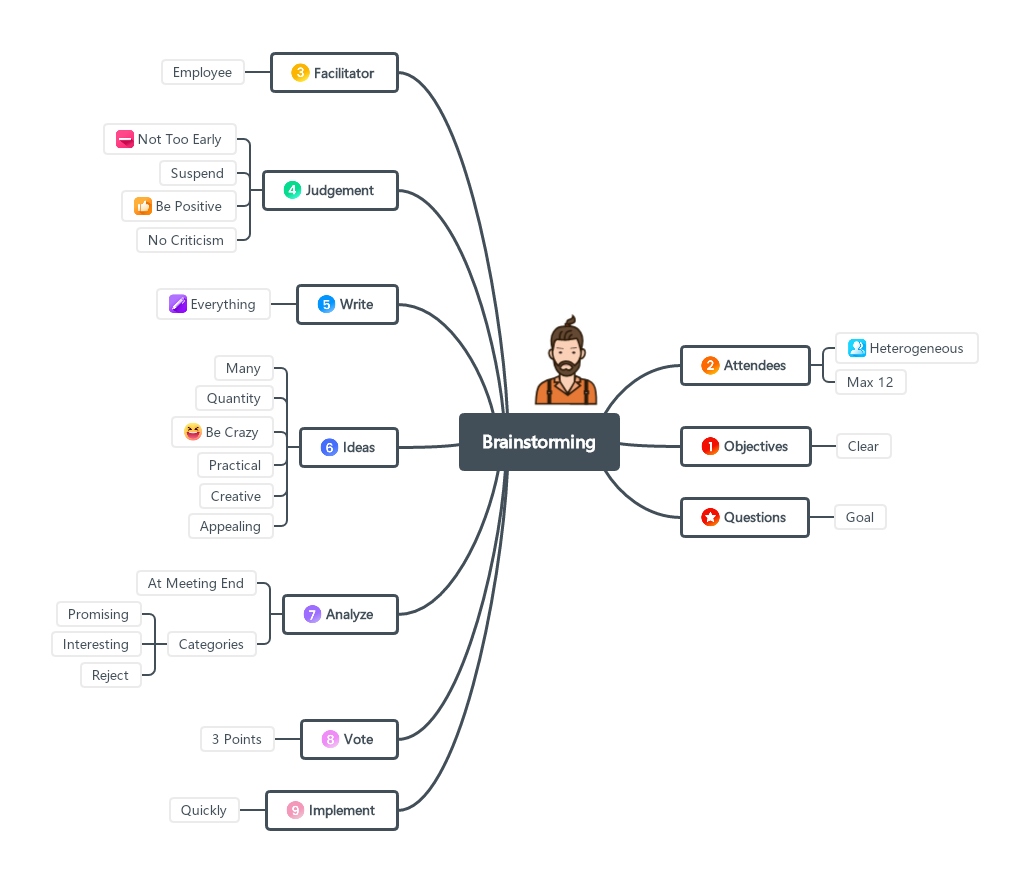
Benefits of Mind Map
Mind mapping offers a range of benefits, including organizing thoughts and ideas in a structured and visual way. This technique can prove particularly effective when dealing with challenging or abstract information, breaking down complex concepts into smaller, more manageable parts.
- Enhance your memory and ability to retain information.
- Improving creativity and problem-solving abilities can be achieved through various methods.
- Improve the effectiveness of conveying complex ideas.
- Enhance your ability to work together with others.
How to Create a Mind Map in General
We know what a mind map is, so let's learn to make one for our case. We can also name this part "Components of a mind map."
We need to know some key components. This helps us make a perfect mind map. Let's start!
🚩 Step 1: Start with the theme
First things first, decide on your topic for the mind map. This is also the first node on the canvas.
- Let's say you want to make a mind map about "How to learn Spanish". This will be the theme.
🚩 Step 2: Add Main Branches
Start brainstorming with your team members and start drawing the main branches radiating outward from the central idea. Each of these main branches would represent a primary category.
You'd better label these branches with a brief text; otherwise, it would be hard to look back at all those branches without any labels.
- Back to "How to learn Spanish", for our main branches and primary category, name them Method 1/2/3.
🚩 Step 3: Create Sub-Branches
For each of the main branches, create sub-branches by extending lines outward. These sub-branches would represent more specific details and ideas related to the main categories. Brainstorm with your team members and label these sub-branches with concise descriptors.
- In our example, you can think of sub-branches as steps of each method.
🚩 Step 4: Use Keywords
For each node, try keywords, short phrases, and even simple visual elements like cliparts or emojis to represent different ideas within each branch of this mind map. If you have access to different colors of pens, try highlighting to properly categorize the information.
🚩 Step 5: Cross-Link
Once your mind map is ready, try to find different connections between sub-branches. Use a different color of pen or pencil to connect these related branches. These connections will show how different ideas interconnect and contribute to the overall concept.
Method 1: How to Generate a Mind Map with AI
Apart from the old and traditional way of making a mind map, AI tools are killers. They're fast and simple.
Let's generate one with EdrawMind AI Mind Map Maker. Enter your requirements in the box and hit Generate for Free Now. AI will do its job! Let's try it!
This method is straightforward. Give AI all your topics and requirements. Then, it will make you a high-quality mind map. You may edit a bit or use it directly.
And you know what? It's all free~!
Method 2: How to Make a Mind Map on a Computer
Quoted from YouTube partner channel
To create mind maps on a computer, we tend to incline toward mind map software. EdrawMind stands out from the crowd because of some amazing features, like:
- Free of Cost: With EdrawMind, you can create your mind maps for completely free. This is a very rare feature these days as it helps the students to quickly work on their mind maps. The tool also offers a trial period to access all the premium features that are not available in the free version.
- Traverse Mode: With this free mind mapping software, you can create complex mind maps with ease. With the traverse mode, you can analyze a particular category or branch.
- Artificial Intelligence: This free mind mapping maker now comes with a built-in AI tool that helps you generate text that helps you in brainstorming sessions.
- Import & Export Option: EdrawMind offers a wide range of import and export options that ensure that you don't have to be dependent on other third-party tools just to access your files.
- Cross-Compatibility: This free mind mapping software is available on Windows, macOS, and Linux, ensuring dynamic cross-compatibility. If you prefer working online, then you can also check EdrawMax Online or the mobile applications of this mind mapping tool.
Now that you have checked the traditional way of creating a mind map, let us help you understand how to make a mind map in just a few clicks with EdrawMind Mind Map Maker. Head to the official EdrawMind website and download the latest version of this free mind map software, and check out the following step-by-step guide to create a mind map.
Step 1: Login
After downloading EdrawMind to your system, log in to your account to get all the benefits of this mind-mapping software. Once you are in the system, you will find different types of mind maps in the middle and options like New, Open, Import, MindMap Gallery, etc., on the left.
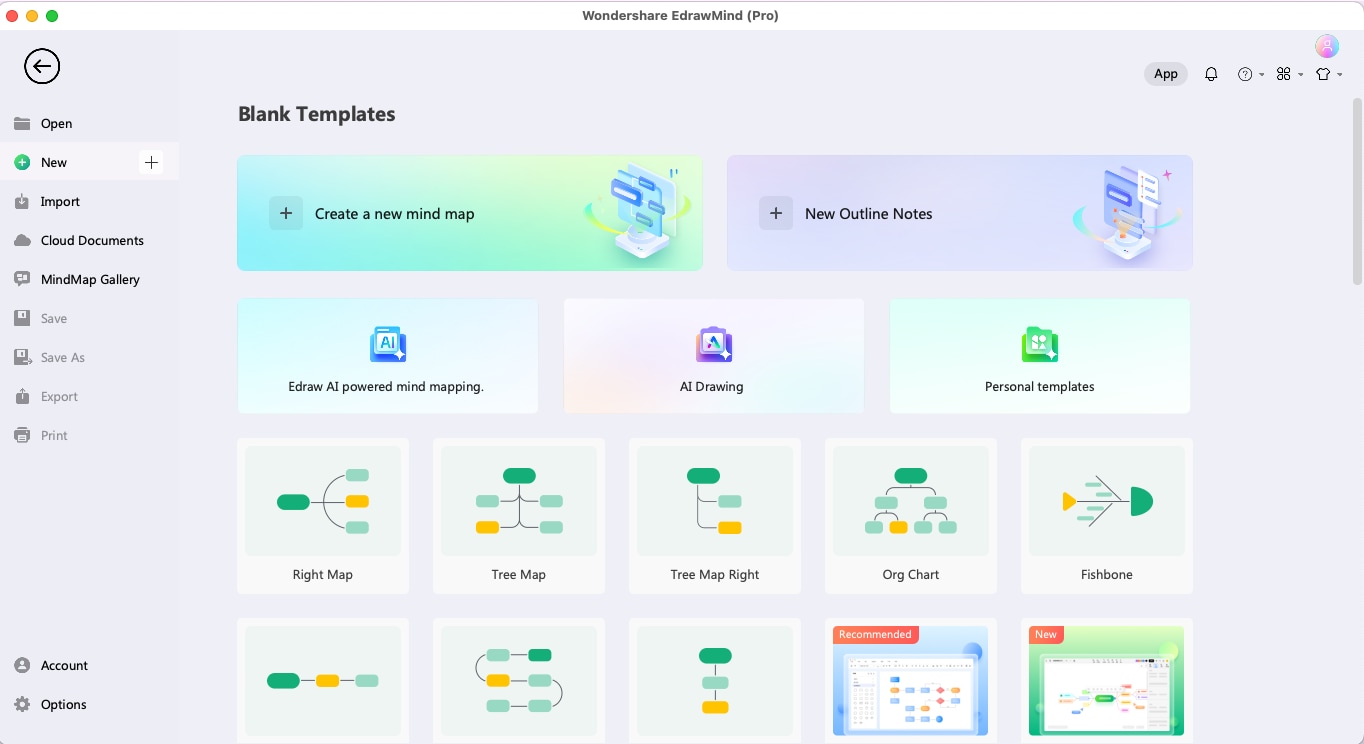
Step 2: Make a Mind From a Sketch
If you simply want an outline for the mind map, click on any of the mind maps from the homepage category. This will instantly take you to the EdrawMind Canvas, from where you can start adding the branches and sub-branches to your mind map.
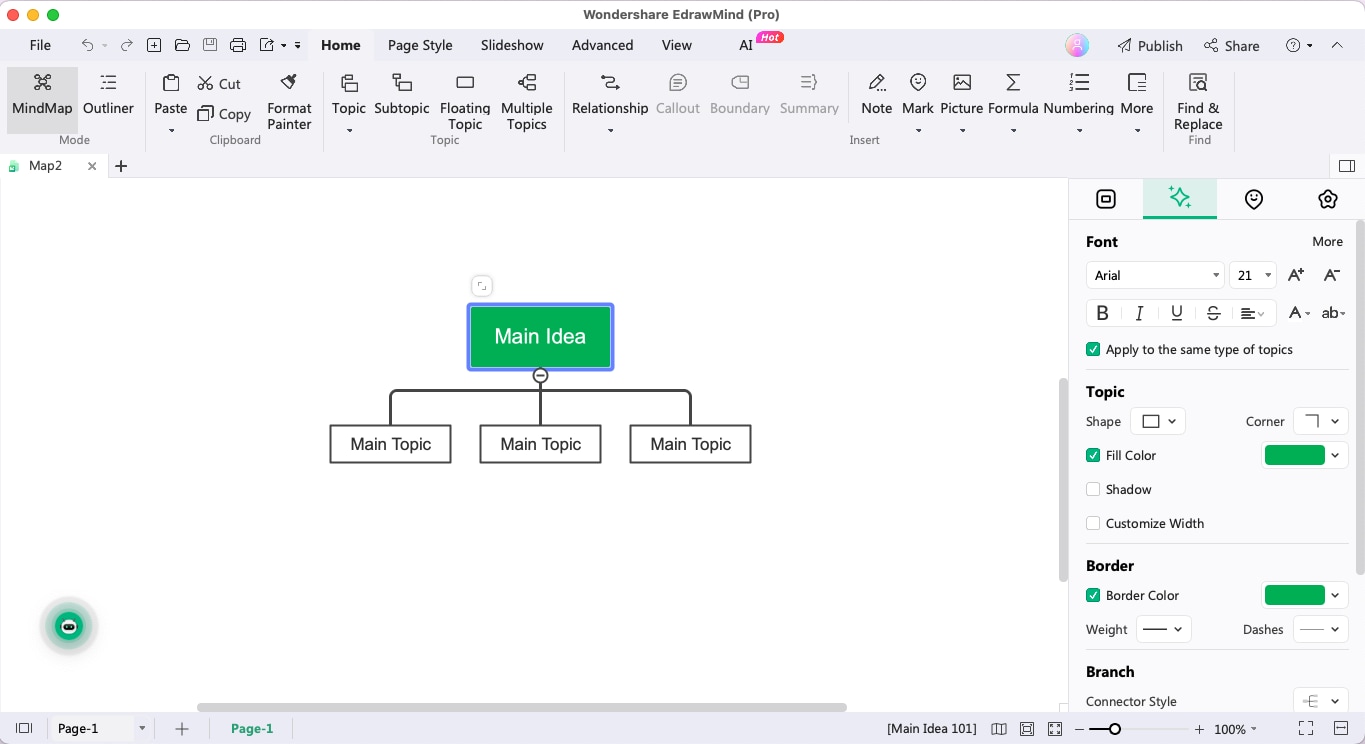
Step 3: Built-in Templates
If you plan to take inspiration from the built-in templates, click on 'MindMap Gallery' on the homepage and search for the mind map category that you require.
EdrawMind comes with a template community that offers thousands of built-in templates that can instantly be duplicated. Select a template from this pool and click on 'Duplicate' to instantly duplicate the entire content of the template to your canvas board.
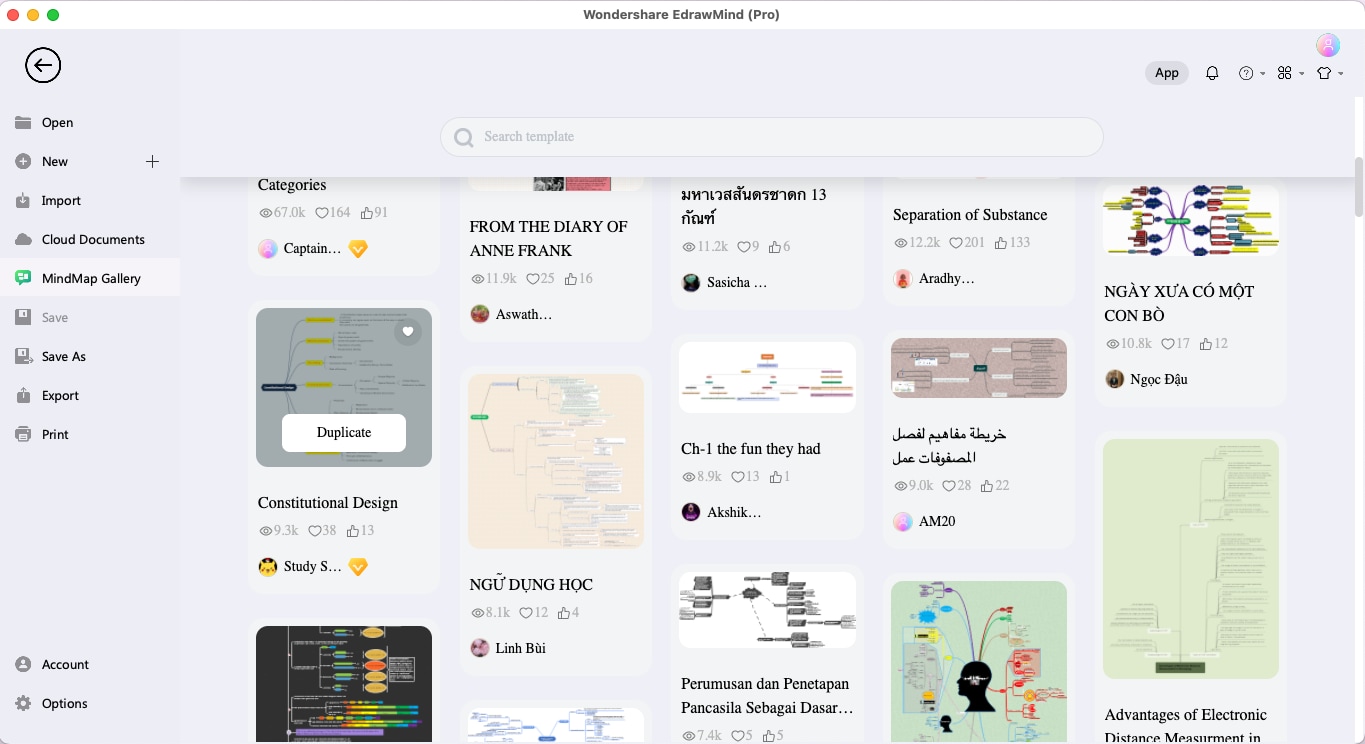
Step 4: Customization
Once you are in the EdrawMind canvas, start by replacing the Main Topic name, followed by adding the branches and sub-branches as per your topic of discussion. Use the Floating Bar option from the top toolbar if you need to add some extra details to your mind map.

Step 5: Connection & Share
Once the mind map is ready, brainstorm with your team members and see if you can find some relevant connections between different branches or categories. Use the Relationship, Callout, Boundary, and Summary features to visually represent the connections between the branches or sub-topics. After finding the connections, you can share the mind map in different formats.
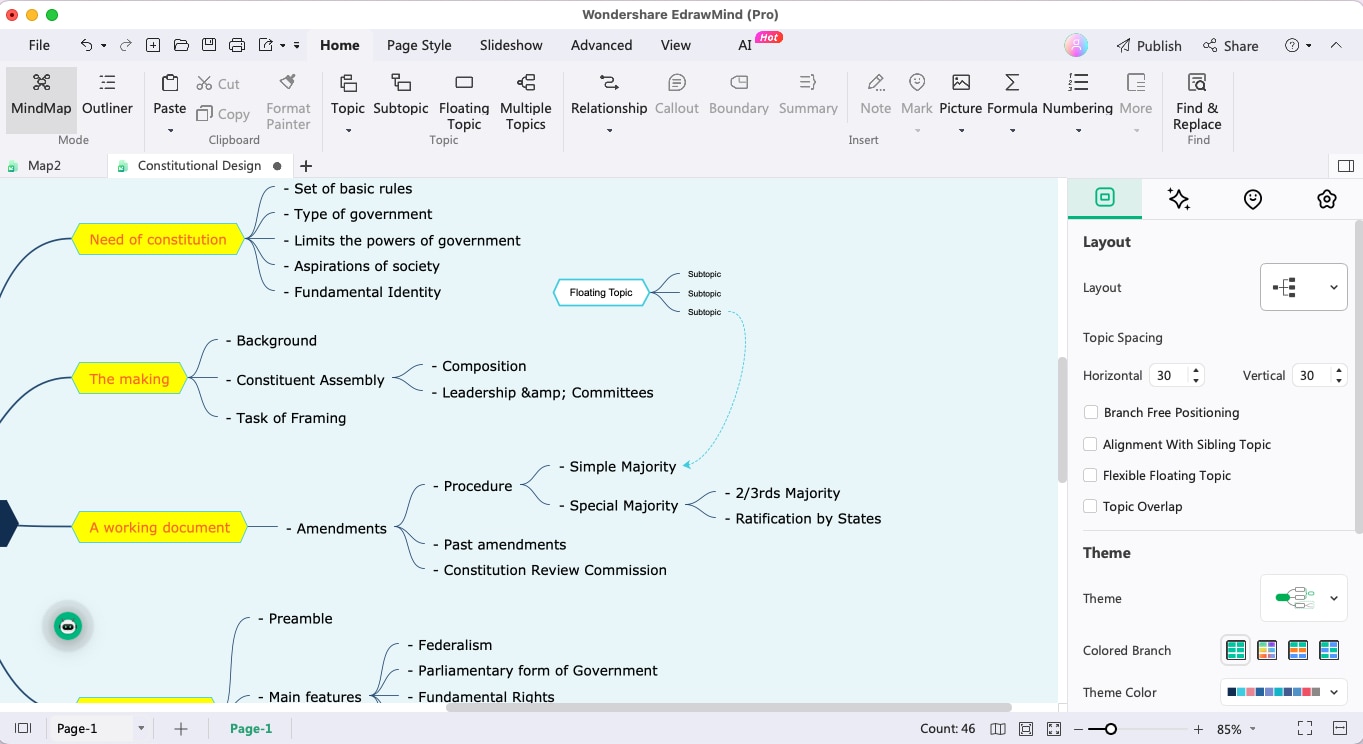
Method 3: How to Make a Mind Map with a Template
To save time and effort, use a pre-made mind map template.
All we need is to pick a template and replace the text. Maybe you need to add or reduce some nodes. Anyway, it's quicker than starting from zero.
How to find mind map templates
There are two ways in general.
One is to Google "mind map templates". Then, browse and select one from the Image tab. Save it as a picture.

The other is to get a mature mind map software. They will most likely provide a template gallery. You can browse and pick one or many templates.
Take Wondershare EdrawMind as an example, you can find thousands of templates from its online library or the program.
Tips for Optimizing Your Mind Map
Here are some suggestions for improving the effectiveness of your mind map. Follow these tips to optimize a mind map and make it more effective, despite the straightforward process of creating one.
- Keep It Simple: To create an effective mind map, it is recommended to maintain simplicity by limiting the number of branches and sub-branches. This can prevent clutter and improve readability, allowing for better focus on the key concepts and information.
- Use shorthand and abbreviations: When creating a mind map, it's helpful to utilize shorthand and abbreviations to maintain clarity and readability. For instance, replacing "customer service" with "CS" can allow for more information to be included on the map without making it overwhelming.
- Prioritize information: When creating a mind map, it is important to prioritize the most relevant information by adding branches and sub-branches. This can prevent becoming overwhelmed by unnecessary details. Consider using various visual aids to highlight the most significant information, such as different colors or font sizes.
- Review and revise as needed: Creating a mind map requires an iterative approach, and it may be necessary to revise and update it as you progress. It is recommended to regularly review your mind map and make necessary adjustments to increase organization and focus during project work.
Conclusion
Mind mapping is a tool to organize thoughts and ideas visually. Follow our step-by-step guide to make a mind map clearly. It helps to understand complex information, brainstorm new ideas, and communicate more effectively. Keep mind maps simple, use shorthand and abbreviations, prioritize information, and review and revise as needed. Mind mapping can help achieve goals for work, school, or personal growth. Try it and see how it benefits you!



